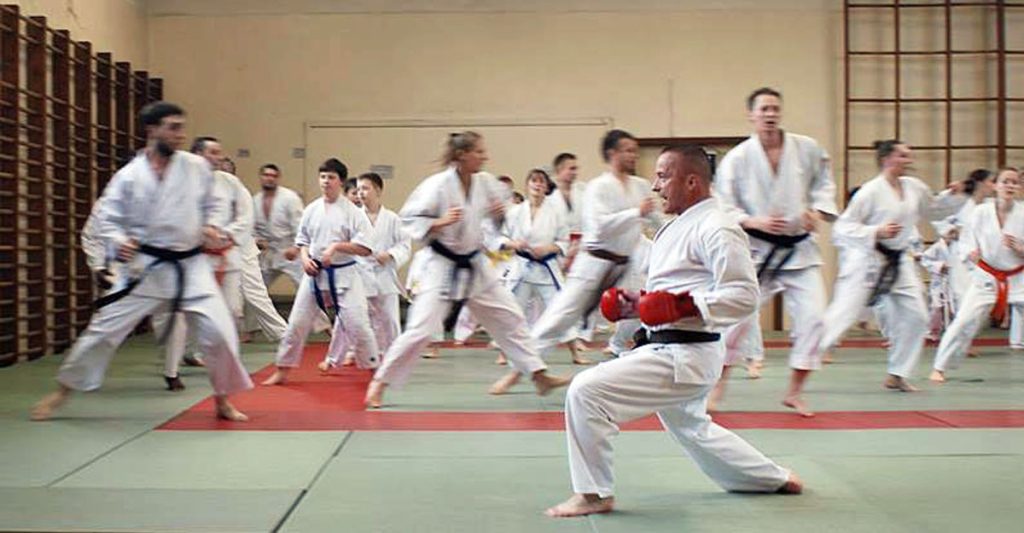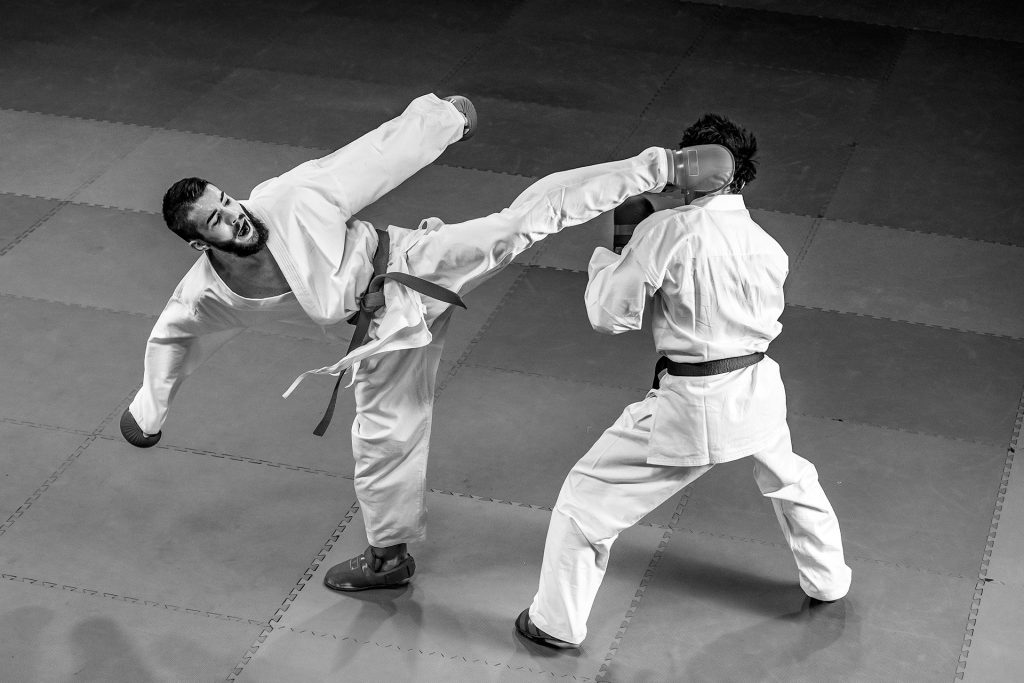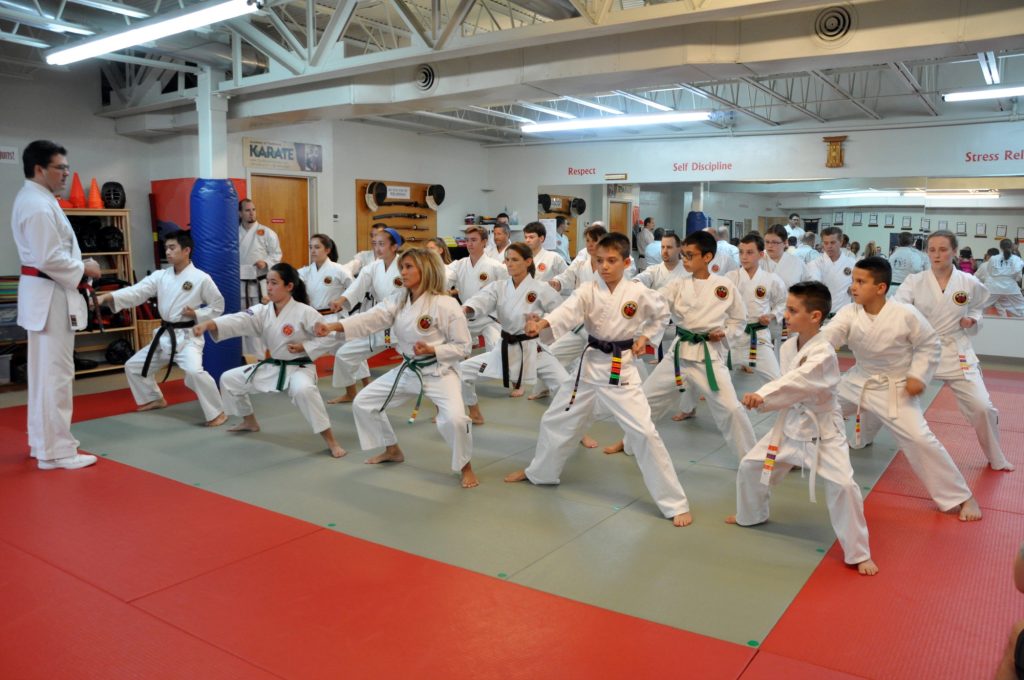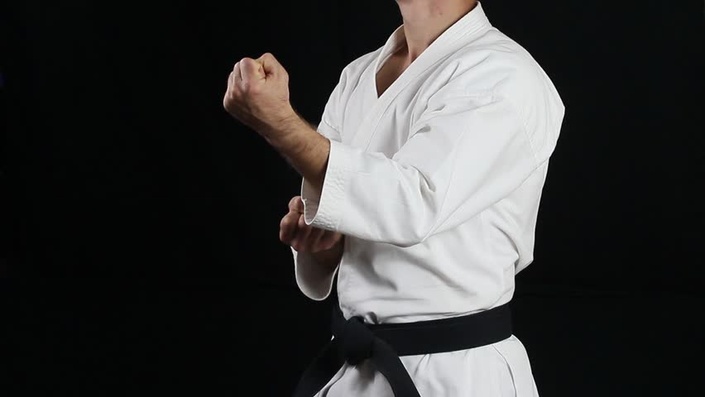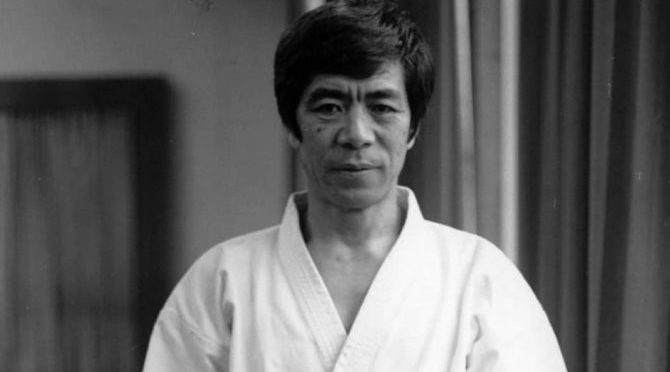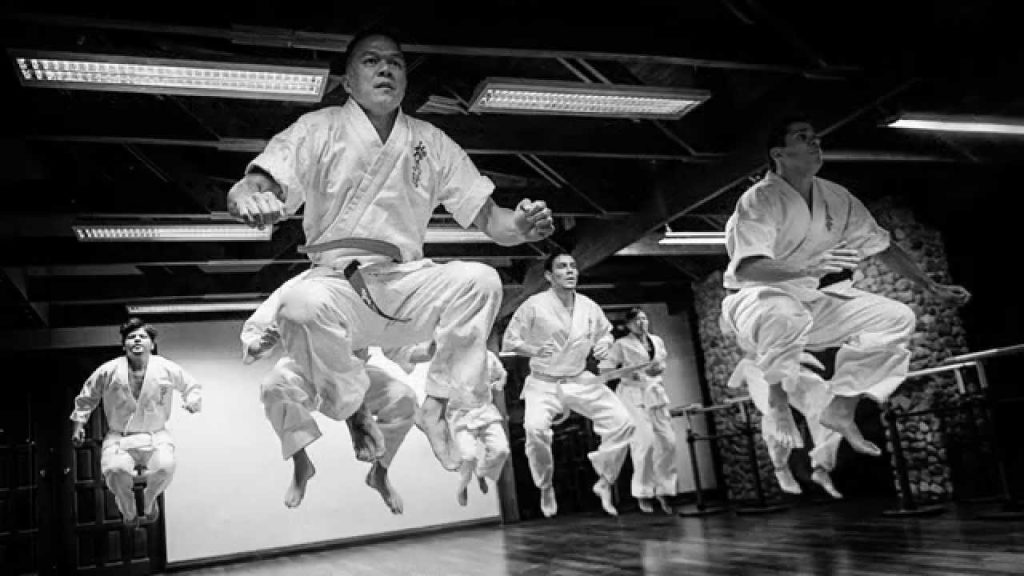Jiyu-ippon kumite
Jiyu-ippon kumite means ‘free one-step sparring’ and it is at this level that the Karate practitioner starts entering advanced kumite drills and begins to hone their free-sparring and fighting skills. Jiyu-ippon kumite is generally introduced at Brown belt level and is the focus kumite for all Brown belt grades and first Black belt (Shodan).
The aim of ‘free one-step sparring’ is to provide the Karate student with a method of developing quick reactions and appropriate and effective defenses against a sudden attack. The method of jiyu-ippon kumite is to state the kind of attack and then to attack with strong spirit and purpose, always trying to catch the defender off guard or off balance. The defender should try to read the attacker’s feints and movements through focusing on the attacker’s breathing while staying as calm as possible inside. By doing this the defender can react with poise and skill and effectively block and counter all attacks.

Once again, like kihon-ippon kumite, jiyu-ippon kumite has many set defenses to learn and remember. The different kinds of attack are front punch to the head, front punch to the body, front kick, side kick, roundhouse kick, back kick, front snap punch and reverse punch. There are a total of 33 set defenses in Kanazawa-sensei’s syllabus to remember from left and right stances although only about 8 different defenses are tested on a grading, usually chosen by the examinee but at the higher levels can be chosen at random by the examiner.
Please refer to Master Hirokazu Kanazawa’s book “Karate Fighting Techniques – The Complete Kumite” for a pictorial move-by-move explanation of all the set defenses or to his DVD series “Mastering Karate.” The members only section of this website also shows all of the necessary kumite drills at the different ranks.

